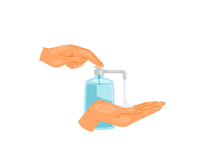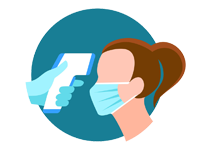Ceftizoxime
Ceftizoxime is a broad-spectrum cephalosporin antibiotic that is used to treat various bacterial infections. It works by inhibiting the growth of bacteria, preventing them from multiplying and spreading. Ceftizoxime is typically used in the treatment of infections such as pneumonia, urinary tract infections (UTIs), and skin infections. It is effective against a wide range of Gram-negative and Gram-positive bacteria, making it a powerful option for treating serious infections.
Uses of Ceftizoxime
- Treats respiratory tract infections like pneumonia and bronchitis
- Used for urinary tract infections (UTIs)
- Effective against intra-abdominal infections
- Helps treat skin and soft tissue infections
- Used for treating septicemia and other severe bacterial infections
How Ceftizoxime Works
Ceftizoxime works by binding to bacterial cell wall proteins and inhibiting the synthesis of the bacterial cell wall. Without a functional cell wall, the bacteria become weak and eventually die. It is effective against both Gram-negative and Gram-positive bacteria, which makes it versatile in treating various infections. Ceftizoxime’s ability to disrupt bacterial cell wall synthesis prevents the bacteria from multiplying, leading to their destruction.
Benefits of Ceftizoxime
- Broad-spectrum antibiotic that treats a wide range of bacterial infections
- Effective against serious and severe infections
- Administered intravenously, providing quick and effective treatment
- Well-tolerated by most patients with minimal side effects
How to Take Ceftizoxime
Ceftizoxime is administered intravenously (IV) or intramuscularly (IM) by a healthcare professional. The dosage and duration of treatment depend on the type and severity of the infection. Typically, it is given every 8 to 12 hours. The exact dose will be determined by your healthcare provider based on factors like your age, weight, and kidney function. Always follow the prescribed instructions for proper use.
Type of Dosage Available
- Intravenous (IV) infusion
- Intramuscular (IM) injection
Side Effects of Ceftizoxime
- Gastrointestinal symptoms such as nausea, vomiting, or diarrhea
- Local irritation at the injection site
- Rash or allergic reactions
- Possible changes in liver or kidney function
- Rare: Seizures or severe allergic reactions (anaphylaxis)
Safety Advice
- Inform your doctor if you have a history of kidney problems or allergies
- Consult your doctor if you are pregnant or breastfeeding before using Ceftizoxime
- Complete the full course of antibiotics to ensure the infection is fully treated
- Drink plenty of fluids to help prevent dehydration, especially if experiencing diarrhea
- Monitor liver and kidney function if you are on prolonged therapy with Ceftizoxime
Frequently Asked Questions (FAQs)
Q: What is Ceftizoxime used for?
A: Ceftizoxime is used to treat a wide range of bacterial infections, including pneumonia, UTIs, intra-abdominal infections, skin infections, and septicemia.
Q: How is Ceftizoxime administered?
A: Ceftizoxime is administered by intravenous (IV) infusion or intramuscular (IM) injection by a healthcare professional.
Q: What are the possible side effects of Ceftizoxime?
A: Possible side effects include gastrointestinal upset, injection site irritation, rash, and rare allergic reactions or kidney function changes.
Q: Can I take Ceftizoxime with other antibiotics?
A: Always consult your doctor before combining Ceftizoxime with other antibiotics to avoid potential interactions and complications.
Q: Is Ceftizoxime safe during pregnancy?
A: Pregnant women should consult their healthcare provider before using Ceftizoxime to ensure it is safe for them.
Download India's most affordable pharmacy app
- Compare with medicine prices
- Save upto 90% on your medicine bills

Temperature Controlled storage and delivery

Regular Sanitization

Disinfected Packaging









 Added!
Added!